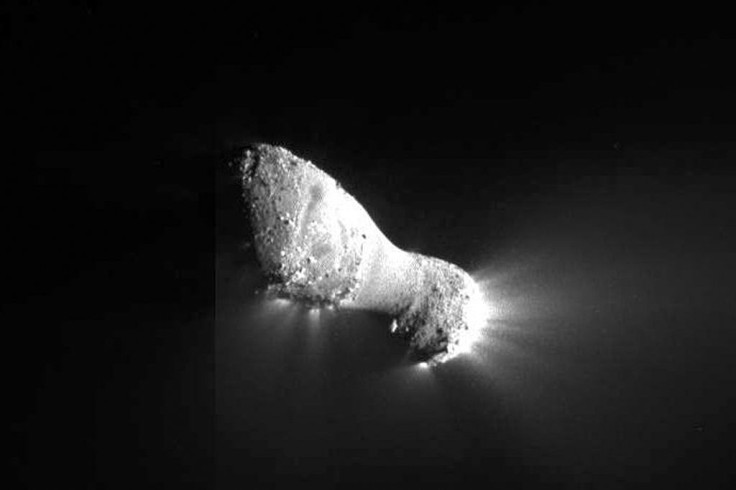How Mysterious 'Alien Spaceship' 'Oumuamua Could Form Alien Planet Someday
The so-called "alien spaceship" 'Oumuamua and similar interstellar objects might jump-start the formation of an alien planet, a new study suggests.
According to a study published in The Astrophysical Journal Letters on Monday, the 1I/2017 U1 ‘Oumuamua, which is the first confirmed interstellar object in our solar system, and other widely wandering bodies could serve as scaffolds for new alien worlds.
Study lead author Susanne Pfalzner, of the Jülich Supercomputing Center and the Max Planck Institute for Radio Astronomy in Germany, and her colleagues theorized that these interstellar objects could "accelerate" the formation of planetary systems "considerably."
"For decades, it has been investigated how planets grow from millimeter-sized grit to planets as huge as Jupiter. This growth process would be very slow, but observations tell us otherwise — some planets exist around very young stars," Pfalzner said in a statement.
"The presence of 100-meter-sized [330 feet] objects within this grit could accelerate the planet-formation process considerably," Pfalzner said. "Attracting the grit and gas of the surrounding disk, some of the former interstellar objects could grow into full planets."
First spotted traversing through the inner solar system in 2017 by the University of Hawaii’s Pan-STARRS1 telescope, the 'Oumuamua has sparked debates over its identity. Its needle-like shape and mysterious origins had some scientists theorizing that it could be an alien spaceship or remnants of extraterrestrial technology.
Other scientists, however, believe that it is likely to be a comet as it behaved like one. The mysterious interstellar object was initially thought to be an asteroid until astronomers found that was gradually accelerating from its initial 196,000 miles per hour (87.3 kilometers per second) speed.
According to the new study, 'Oumuamua's sighting is a sign that there are many more untethered objects like it in the Milky Way Galaxy. And the researchers believe that these objects often stumble into newly forming solar systems.
Pfalzner and co-author Michele Bannister, an astrophysicist at Queen's University Belfast in Northern Ireland, estimated that a minimum of 10 million interstellar objects roughly the same size as the 'Oumuamua may be present in the protoplanetary disk surrounding a newborn star.
Due to the presence of these objects, the growth of the "seed planetesimals" could be much faster than it should be.
Meanwhile, scientists at NASA estimated that 'Oumuamua zoomed past Saturn's orbit in January this year and is heading for the constellation Pegasus.

© Copyright IBTimes 2024. All rights reserved.





















